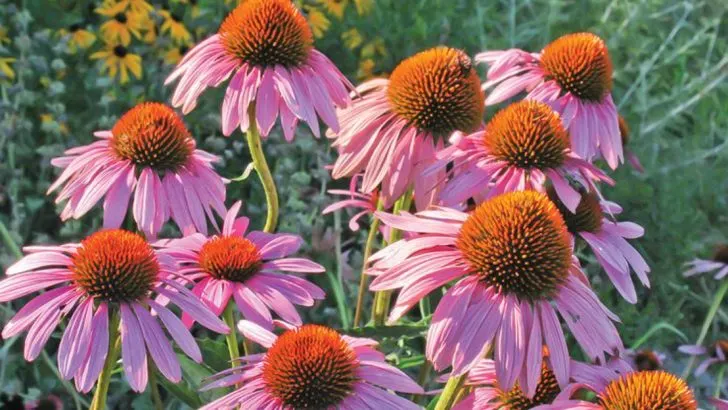Creating a low-water, eco-friendly garden not only helps conserve precious resources but also reduces your garden’s overall environmental impact. With the right plants and techniques, you can create a lush, vibrant space that requires minimal water and maintenance.
In this article, we share 16 simple ways to create a sustainable garden that thrives with little water. From drought-tolerant plants and efficient watering systems to mulching and smart soil practices, these tips will help you create a garden that’s both beautiful and environmentally conscious. Transform your outdoor space into a water-efficient haven while still enjoying a lush garden year-round!
Choose Native Plants
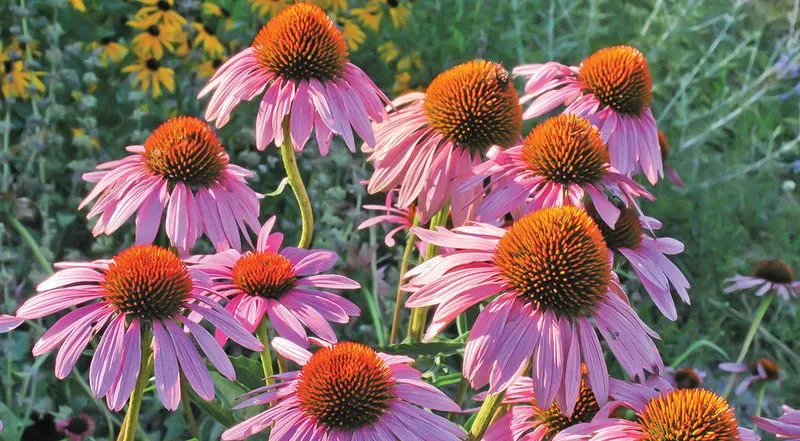
Opting for native plants is a great start, as they are naturally adapted to the local climate and require less water. Native flora thrives in the conditions they evolved with, making them resilient and low-maintenance. Consider local wildflowers, shrubs, or grasses that enhance your garden’s natural beauty.
These plants often attract local wildlife, such as butterflies and bees, aiding in pollination. A garden filled with native species not only conserves water but also supports biodiversity. It’s a simple yet effective way to make your garden more sustainable. Explore local nurseries for recommendations.
Implement Drip Irrigation

Drip irrigation systems are efficient in delivering water directly to the plant roots, minimizing evaporation and waste. This method allows precise control over water distribution, ensuring plants receive the right amount of hydration.
Installing a drip system can save a significant amount of water compared to traditional sprinklers. It’s especially beneficial in dry regions where water conservation is crucial. With adjustable settings, drip irrigation caters to the specific needs of different plants, promoting healthy growth. Investing in this system is a smart choice for any eco-conscious gardener.
Utilize Mulch
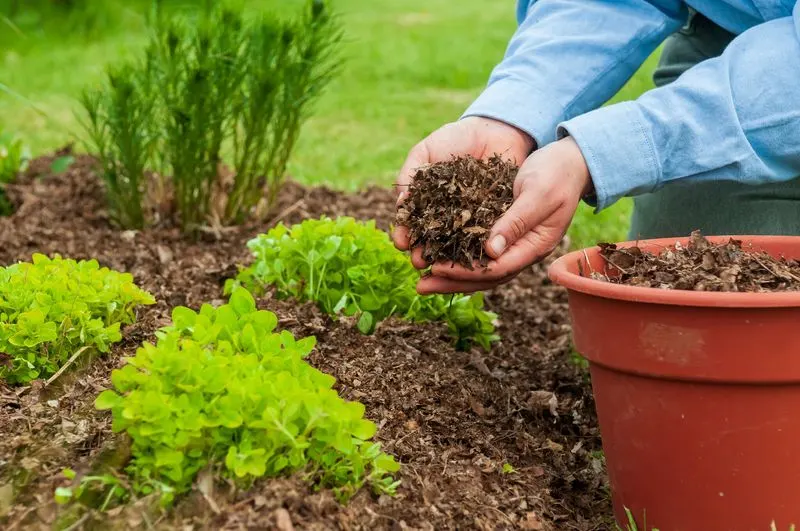
Covering soil with mulch helps retain moisture, reducing the need for frequent watering. Mulch acts as a barrier against evaporation, keeping the soil cool and damp. It also suppresses weeds that compete for water and nutrients.
Organic mulches, like straw or wood chips, decompose over time, enriching the soil with nutrients. This adds an extra layer of sustainability to your garden. Applying a generous layer of mulch around plants is a simple step towards conserving water. Consider experimenting with different types to see which works best for your garden.
Harvest Rainwater
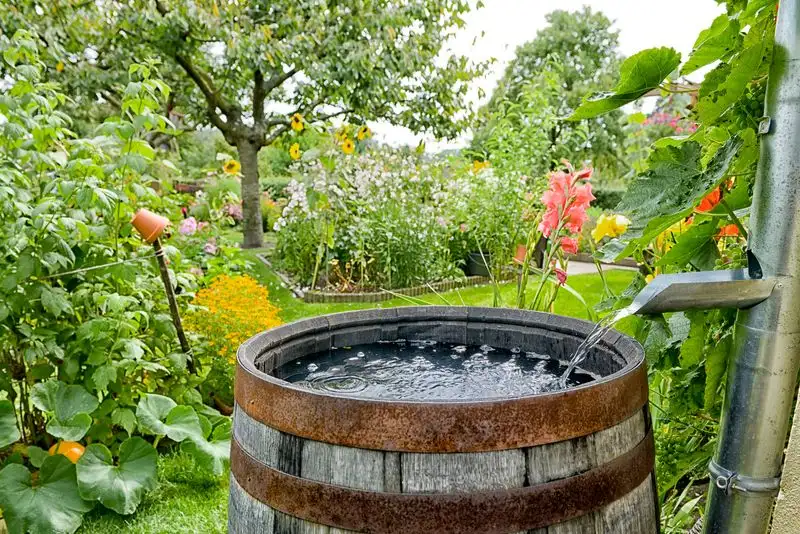
Installing rain barrels to collect rainwater is an eco-friendly strategy to water your garden. This method utilizes natural rainfall, reducing dependency on municipal water supplies. Position barrels under downspouts to capture runoff effectively.
Rainwater is free of chemicals often found in tap water, making it ideal for plants. Using collected rainwater provides a sustainable irrigation solution that benefits both the environment and your wallet. It’s an excellent way to make use of nature’s resources. Ensure barrels have secure lids to prevent debris and insect breeding.
Practice Xeriscaping
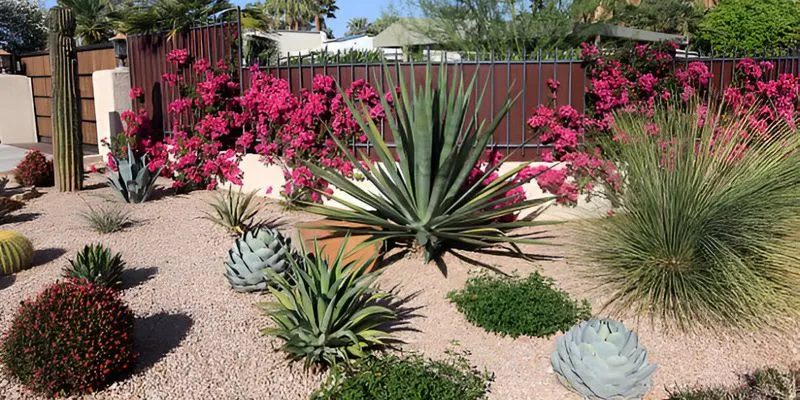
Xeriscaping is a landscaping method that emphasizes water-efficient plants and design. By selecting drought-tolerant species and reducing lawn areas, you can significantly cut water usage. This approach often features gravel, stones, and mulch for an attractive, low-maintenance garden.
Xeriscaped gardens require minimal upkeep once established, providing a practical and aesthetic solution to water conservation. It’s an innovative way to create a beautiful garden without relying heavily on irrigation. Consult local gardening experts for plant recommendations suited to your area.
Create a Windbreak

Planting windbreaks, such as tall shrubs or trees, can protect your garden from drying winds. Windbreaks reduce evaporation by slowing down the wind speed around your plants. This means your garden retains moisture longer, cutting down the frequency of watering.
Strategically placed windbreaks also provide shade and shelter, creating a microclimate that benefits plant growth. It’s a natural way to enhance the resilience of your garden against harsh weather conditions. Choose native species for windbreaks to maintain harmony with your eco-friendly efforts.
Install a Soaker Hose
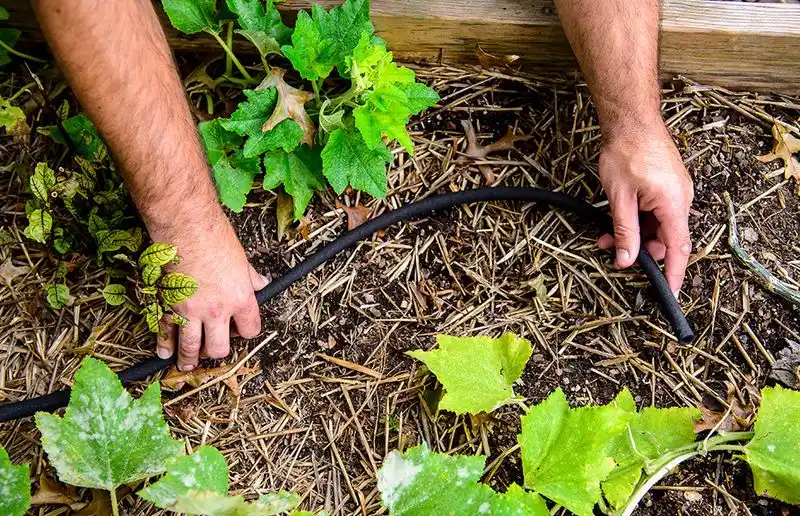
Soaker hoses are an effective way to ensure moisture reaches plant roots directly. Made from porous material, these hoses slowly release water, reducing surface runoff and evaporation. This method is ideal for vegetable gardens or flower beds that require consistent moisture.
Soaker hoses can be woven through your garden with ease, providing efficient irrigation without the need for complex systems. Their simplicity and effectiveness make them a popular choice among eco-friendly gardeners. Flexibility in layout allows customization to fit any garden shape or size.
Incorporate Permeable Paving
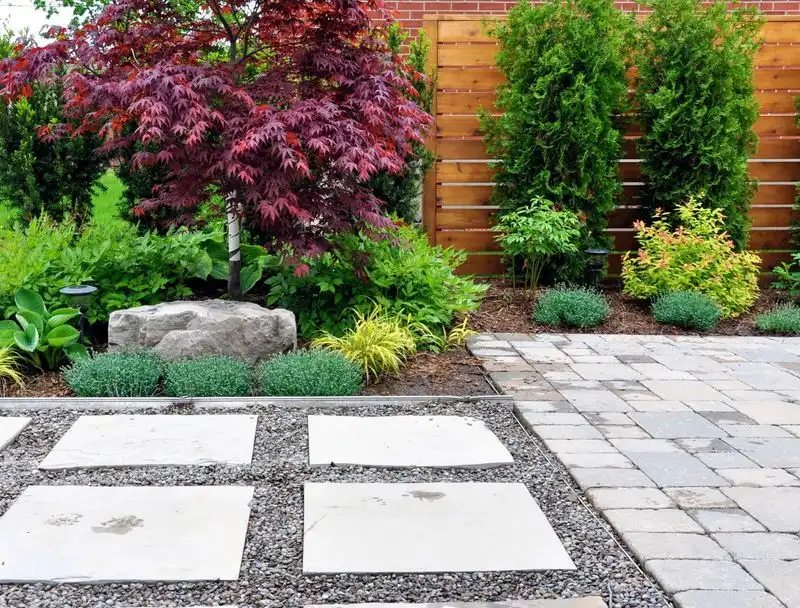
Permeable paving allows rainwater to seep through surfaces, reducing runoff and promoting groundwater recharge. This sustainable practice helps manage stormwater effectively, preventing erosion and waterlogging.
Using permeable materials for garden paths and patios integrates well with eco-friendly landscaping. It supports a natural water cycle, benefiting the environment while enhancing garden aesthetics. Consider materials like gravel, permeable bricks, or pavers with gaps for your garden pathways. They offer both functionality and visual appeal, aligning with sustainable gardening principles.
Focus on Soil Health

Healthy soil retains moisture more efficiently, reducing the need for frequent watering. Improve soil health by incorporating organic matter, like compost or aged manure. This enhances soil structure, allowing better water penetration and retention.
Healthy soil supports plant growth and resilience, leading to a vibrant garden with less water input. Regularly testing soil and amending it as needed ensures optimal conditions for your plants. Focusing on soil health is a foundational step in creating a sustainable, low-water garden, rewarding you with thriving flora.
Opt for Gray Water Systems
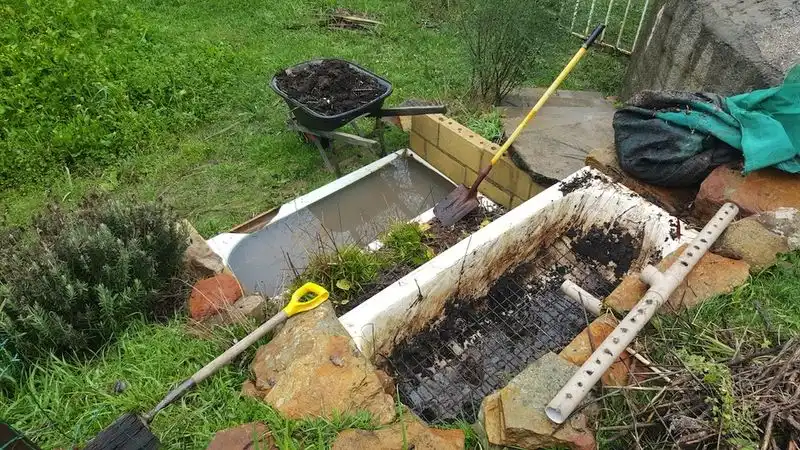
Gray water systems recycle household water, like from sinks or showers, for garden irrigation. This reduces the demand on freshwater resources, providing a sustainable alternative for watering plants.
Implementing a gray water system can significantly cut down water usage in your garden. Ensure the system is properly installed to avoid contamination and use biodegradable soaps to keep plants safe. It’s a practical solution for eco-conscious gardeners looking to minimize their environmental footprint. Research local regulations and guidelines for gray water usage prior to installation.
Choose Drought-Resistant Plants

Drought-resistant plants are ideal for reducing water consumption without sacrificing beauty. These plants can thrive with minimal watering, making them perfect for eco-friendly gardens. Succulents, lavender, and sage are popular choices due to their resilience and appeal.
Incorporating drought-resistant varieties ensures your garden remains vibrant even in dry spells. Explore different textures and colors to create an engaging landscape. Selecting these plants aligns with sustainable gardening, reducing the environmental impact while maintaining a beautiful outdoor space.
Design with Swales
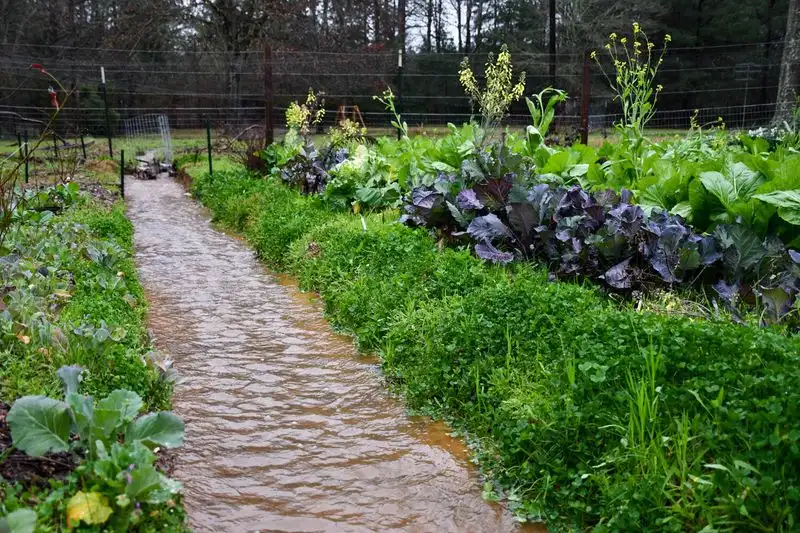
Swales are shallow, contoured channels that guide water to where it’s needed most. They help manage stormwater, reduce runoff, and enhance water infiltration in your garden. Swales are particularly useful on sloped landscapes, directing water towards plant beds.
Designing with swales enhances your garden’s natural resilience to water scarcity. This method not only conserves water but also prevents soil erosion and nutrient loss. It’s an innovative way to integrate water management into your garden design, supporting a sustainable and thriving ecosystem.
Conduct Regular Maintenance
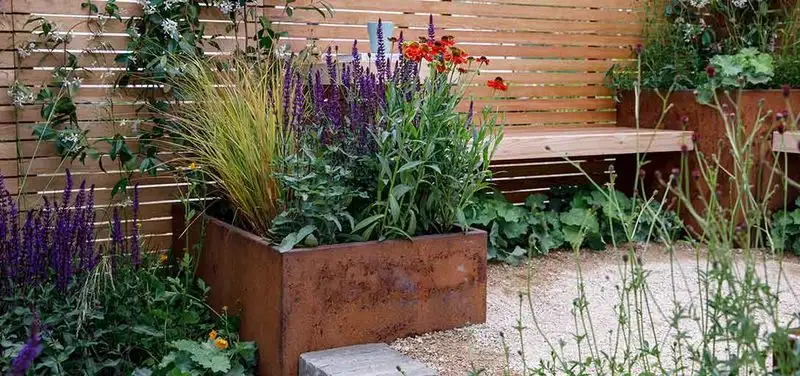
Regular maintenance ensures your garden’s water-efficient systems function as intended. Check irrigation lines for leaks, trim plants to reduce water demand, and monitor soil moisture levels. Consistent upkeep allows you to catch issues early, maintaining the effectiveness of your eco-friendly practices.
Maintaining your garden helps optimize water usage, ensuring every drop is used wisely. It’s a proactive approach to sustaining a low-water garden. Engage in seasonal assessments to adapt your strategies to changing conditions, keeping your garden vibrant year-round.
Create Zones for Different Needs
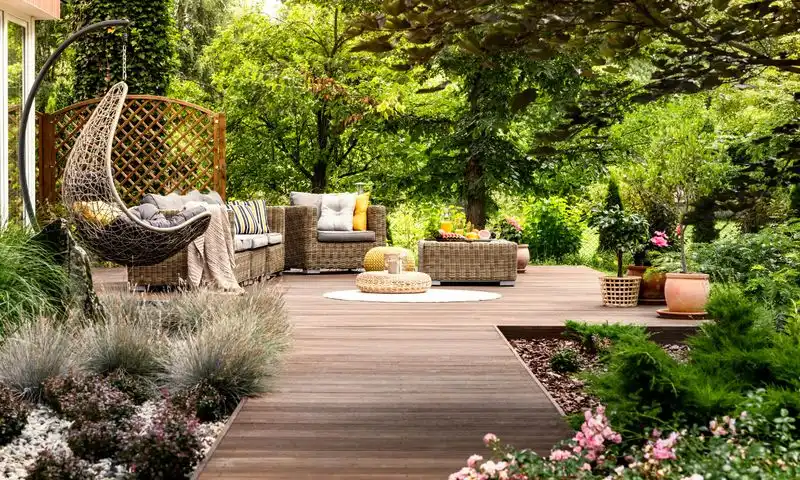
Designing garden zones based on plant water requirements allows efficient water management. Grouping plants with similar needs ensures optimal hydration, minimizing waste. This zoning strategy simplifies irrigation, making it easier to maintain your garden’s health.
Create distinct areas for high, medium, and low water plants, planning irrigation accordingly. This thoughtful layout not only conserves water but also enhances plant growth by providing tailored care. Zoning is a practical way to achieve a balanced and sustainable garden environment.
Encourage Pollinators
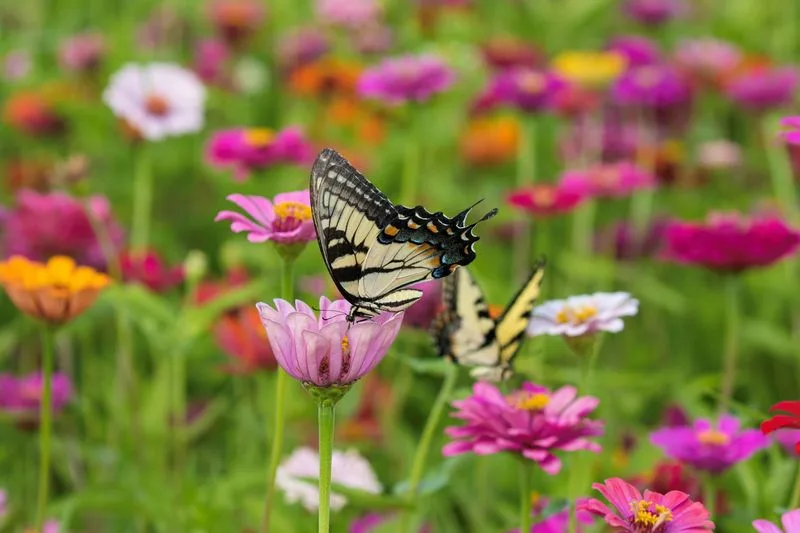
Attracting pollinators like bees and butterflies boosts your garden’s vitality. These creatures aid in the reproduction of plants, ensuring a healthy and productive space. Planting a variety of flowers provides nectar and habitat, supporting pollinator populations.
A pollinator-friendly garden can thrive with less water, as many of these plants are hardy and drought-resistant. Encouraging pollinators enhances biodiversity, adding life and movement to your garden. It’s a win-win for both your plants and the environment, promoting a thriving ecosystem.

